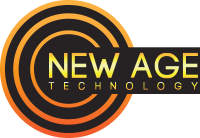Introduction to Smart Energy Solutions in Commercial Spaces
In today’s fast-paced world, businesses are constantly looking for ways to cut costs, improve efficiency, and make smarter decisions. This is where smart energy solutions come into play, especially in commercial spaces. These systems are game changers, making buildings not just more energy-efficient but also more comfortable and easier to manage. Think of smart energy solutions as the brain behind modern commercial buildings, controlling everything from lighting to heating, and air conditioning, ensuring that energy use is both optimal and efficient.
By using sensors, smart meters, and other connected technologies, buildings can now understand and adapt to how they are used. For instance, lights automatically dim or switch off when a room is empty, and heating can adjust based on the number of people in a space or the weather outside. This isn’t just about saving money on energy bills – though that’s a big part of it – it’s also about reducing carbon footprints and making businesses more sustainable.
The beauty of these technologies is that they can be integrated into existing buildings or designed into new constructions. And with the advancement in IoT (Internet of Things) and AI (Artificial Intelligence), these solutions are getting smarter and more intuitive. Whether it’s a small office or a sprawling corporate campus, smart energy solutions are setting the standard for what it means to be a modern, efficient, and responsible business in today’s world.
The Evolution of Energy Management in Commercial Real Estate
Once upon a time, businesses cared about keeping the lights on and the doors open. Today, it’s all about doing it smarter, greener, and more efficiently. Enter the age of smart energy solutions in commercial real estate. This isn’t just about swapping out old lightbulbs for LED ones. It’s a full-blown evolution. Buildings are getting brains. They’re learning when to dial down the heating, power up the air conditioning, or dim the lights, all by themselves. We’re talking sensors, smart meters, and cloud-based monitoring that give building managers the power to see energy use in real time and adjust accordingly. This change didn’t happen overnight. It’s the result of a growing awareness of our carbon footprint and the tech boom that’s placed incredible tools at our disposal. Now, a commercial building isn’t just a place to work; it’s a participant in energy conservation. The bottom line? Smart energy management is saving money and the planet, one kilowatt at a time.
Key Components of Smart Energy Solutions for Businesses
Smart energy solutions are reshaping how businesses manage power and consumption, making operations both more efficient and eco-friendly. At the heart of these innovations are a few key components. First, smart meters track energy usage in real time, enabling precise billing and helping firms to identify wasteful practices. Then, energy management systems (EMS) allow for the analysis and optimization of energy consumption, pinpointing areas for improvement. Renewable energy sources, like solar and wind, are being integrated more than ever, reducing reliance on traditional, polluting energy sources. Also, smart lighting and HVAC systems adjust according to occupancy and weather, slashing unnecessary use. Together, these technologies not only cut costs but also push us towards a greener, more sustainable future.
The Impact of Smart Energy Solutions on Utility Costs
Smart energy solutions are making a huge splash in how we manage utility costs for commercial spaces. Imagine spending less on keeping lights on, the air conditioning running, or machinery operational. That’s the reality with technologies like smart thermostats, energy-efficient lighting, and solar panels. These aren’t just buzzwords; they’re game-changers. First off, smart thermostats can learn your building’s patterns, adjusting heating and cooling to when it’s actually needed, not just on a fixed schedule. This alone can slash heating and cooling costs significantly. Then, there’s LED lighting—this isn’t your old-school bulb. LEDs use a fraction of the energy and last way longer. Light up your space for less cash? Yes, please. And solar panels? They might have a higher upfront cost, but the long-term savings are hard to ignore. Sunshine turns into electricity, cutting down on how much energy you need to buy from the grid. Plus, in some places, you can even sell back excess power. So, what’s the bottom line? Smart energy solutions are not just making commercial spaces more eco-friendly; they’re also cutting down utility bills. It’s a win-win. Embrace these technologies, and watch your costs go down while you do your part for the planet.
How Smart Technology Is Enhancing Energy Efficiency
Smart tech is revolutionizing the way we manage energy in commercial spaces, making things way more efficient. Think of it as giving buildings a brain. This brain can adjust lighting, heating, and cooling systems automatically. So, if a room is empty, the lights and air conditioning won’t be running for no reason, saving a ton of energy. Also, thanks to things like sensors and smart meters, businesses can now get real-time data on their energy use. This means they can spot where they’re using too much power and cut down. And the cool part? Most of this can be controlled from a smartphone or computer. It’s not just about saving energy; it’s also about slashing costs. As energy prices keep climbing, using smart tech can make a big difference to a company’s bottom line. Plus, it’s good for the planet. Less energy use means fewer carbon emissions, which is a win for everyone. So yeah, smart technology is not just changing the game; it’s setting a whole new score in energy efficiency.
The Role of Renewable Energy in Future Commercial Spaces
Renewable energy is stepping up as a game-changer for commercial spaces. It’s not just good for the planet; it cuts down on those hefty utility bills too. Think solar panels, wind turbines, and smart building designs that make the most out of natural light and air. Companies are catching on that going green isn’t just a trendy move—it’s smart business. Solar energy, for example, can significantly reduce electricity costs, making it a top choice for future-focused businesses. Wind energy isn’t far behind, offering a robust solution for larger commercial spaces. Plus, adopting these clean energy sources can boost a company’s image, showing they care about more than just profits. In a nutshell, renewable energy isn’t just playing a role; it’s leading the charge in shaping the next-gen commercial spaces.
Integrating Smart Energy Solutions: A Step-by-Step Guide
First up, you want to know how to mesh smart energy solutions into your commercial space, right? Well, picture this as your straightforward roadmap. Step 1: Kick things off with an energy audit. This means calling in the pros to check out your current energy use. It’s like having a doctor look over your space to spot where you’re bleeding energy and money. Step 2: Next, get smart, literally. Invest in smart thermostats and lighting systems. These aren’t your average gadgets. They learn your habits, making energy use efficient without you lifting a finger. Step 3: Time to harness the power of the sun with solar panels. They might cost a bit upfront, but think of them as the gift that keeps on giving by slashing your energy bills. Step 4: Don’t forget about insulation. It’s not glamorous but beefing up your insulation keeps your space toasty or cool, making it energy efficient. Step 5: Lastly, keep an eye on the prize. Use energy management systems to track your usage and savings. This isn’t just about cutting costs but about being smart and sustainable. Dive into these steps, and watch your commercial space lead the pack in energy efficiency.
Case Studies: Successful Implementation of Smart Energy Solutions
Across the globe, businesses are turning heads with their smart energy transformations, proving it’s not just talk; it’s real, effective change. One standout example is a retail giant in Sweden, which slashed its energy bills by 40% after equipping its stores with IoT-enabled energy management systems. These systems optimize lighting, heating, and cooling based on real-time usage data, making a dent in both costs and carbon footprint.
Then, there’s a high-rise in New York City, towering in its ambition and now in its energy efficiency. The building’s owners installed smart sensors and automation systems that adjust power usage on-the-fly, cutting down energy consumption by 30% annually. This wasn’t just good for the planet; it improved the building’s bottom line, showing tenants and investors alike that green is the way to go.
Both cases underline a crucial point: investing in smart energy solutions pays off, in reduced costs, decreased environmental impact, and enhanced reputation. Businesses taking this route are not only saving on expenses but are also setting themselves up as leaders in sustainability, a badge that attracts customers, partners, and employees. Remember, it’s not just about saving the planet; it’s about smart business too.
Challenges and Considerations in Adopting Smart Energy Solutions
Switching to smart energy solutions isn’t just flipping a switch. There are hurdles along the path. First off, the cost. Upfront, smart tech demands a chunk of change. Think installation and the gadgets themselves. Then there’s the tech learning curve. Not everyone’s a whiz at understanding new systems, making training essential but sometimes tricky. Compatibility issues also pop up. New smart systems might not play nice with the old infrastructure, leading to more headaches and upgrades. Lastly, security risks can’t be ignored. More connected devices mean more chances for cyber attacks. Keeping these systems safe is a constant battle. In summary, while smart energy solutions promise efficiency and savings, they demand careful planning and awareness of potential challenges.
The Future Outlook: Smart Energy Solutions Driving Sustainable Growth
Smart energy solutions are not just trends; they’re the future. Businesses worldwide are now seeing the clear benefits of shifting towards more sustainable and efficient energy use. This shift isn’t just about saving the planet—it’s about saving money and boosting performance too. With technology like solar panels, smart lighting, and energy-efficient HVAC systems, companies can dramatically lower their energy bills. But it’s not only about cost savings. It’s also about resilience. Smart energy means smarter businesses that can adapt to energy price changes and reduce their impact on the environment. This future outlook is bright, with these technologies driving sustainable growth, making businesses more competitive, and helping them meet increasingly strict regulations on energy use and carbon emissions. In essence, smart energy solutions are paving the way for a more sustainable, efficient, and resilient commercial landscape.



